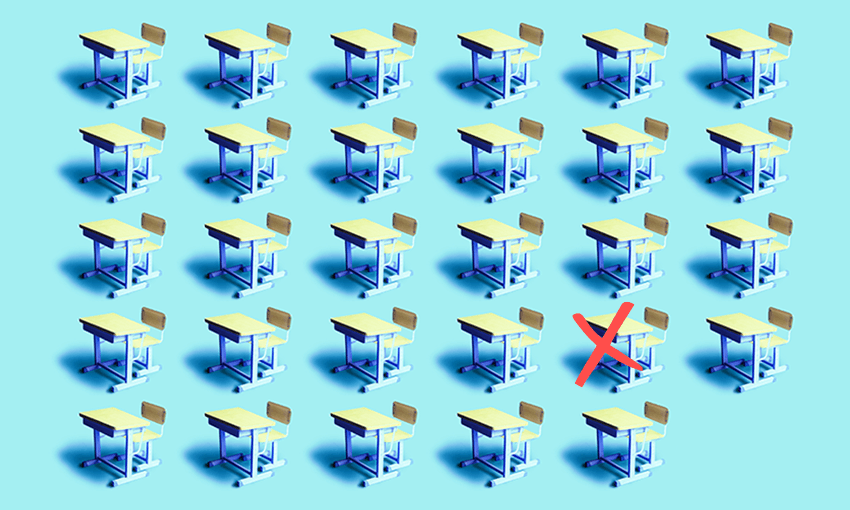A teacher responds to Labour’s pledge to lower the teacher to student ratio by 2026.
Last week I thought my dreams had come true when Labour announced a new pathway to reduce class sizes for years four to eight. If successful, class sizes would reduce by one student by 2026, making it a teacher to student ratio of 1:28.
You may have noticed that many of the collective agreements in the education sector are currently up for negotiation… the primary teacher’s collective expired on June 30 2022, so teachers are keen to see action on pay (have you seen inflation and interest rates?), workload (it is astronomical and never are we on top of it), conditions (improved sick leave, such as mileage for resource teachers, increased classroom release time, release time for resource teachers, recognition for cultural leadership) and recognition for our relief teachers by lifting the salary cap.
So, to see that our actions and activism was encouraging the government to make a move on classroom size was exciting for many teachers and principals.
The recommendations
In 2021, NZEI Te Riu Roa presented the Pūaotanga Report to then minister of education, Chris Hipkins. Pūaotanga was commissioned by NZEI Te Riu Roa in response to longstanding concerns among its members about primary school staffing and its effect on teaching and learning. The investigation, led by former education minister Steve Maharey, called for smaller classroom sizes. The review recommended incrementally lowering the teacher to student ratio by 2030, so years four to eight would have one teacher for every 23 students.
The idea of lowering class sizes came from Labour in the early 2000s when Trevor Mallard was the minister of education. In 1996, the year I first started teaching, the teacher to student ratio was set at 1:29 for years four to eight and 1:23 for years one to three to generate staffing. In 2008, then minister Chris Carter reduced the ratio for new entrant/year one classes to 1:15. Yet 1:29 remains the ratio for years four to eight.
There was a little blip by two National education ministers in 2009 and 2012. Anne Tolley tried to reverse the 2008 1:15 ratio until she realised those 700-plus teachers were already in play; then there was Hekia Parata’s infamous attempt to increase class sizes in 2012 to the detriment of intermediate schools in particular.
The reality
So what does yesterday’s announcement to lower the ratio to 1:28 mean for teachers and students, to teaching and learning, to workload for students and extra time with learners?
Nothing. Nada. Zip.
This is a funding model for teaching staff. It is calculated on how many students a school has at each level. Some schools have small rolls, meaning principals will have a teaching component to their role – and their principal workload is the same whether they have a roll of 28, 280 or 580. Senior staff like deputy principals and assistant principals are included in the teaching calculation, so when you take them out of the class into a full-time walking role (with no teaching load because they are focused on pastoral care or curriculum leadership for example), the students who would have been in their class are then spread among the other classes.
This can mean that all class sizes increase, not just at years four to eight, but from new entrant classes all the way up. Case in point, I know a second year beginning teacher with a year three class of 31 students, with three other year three classes at the same school with 30-32 students. This teacher literally has nowhere for a 32nd child to sit in their classroom. Many intermediate schools routinely have 32 students or more in their classes.
Consequently, yesterday’s announcement won’t make a difference for teachers or students. In 2024 the ratio will be 1:28.5 and teachers have joked which half of the child they’ll have until 2025 when the ratio will be 1:28… but all this announcement will do is help a school that is putting extra funding from their Operations Grant into staffing get their bottom line in the budget looking better.
Prime minister Chris Hipkins was challenged in media interviews on Tuesday morning on how this would help schools. He can put an optimistic lens over it, but this won’t make a dramatic change to teaching or learning.
Jan Tinetti, the current minister of education and former principal, is promoting the Ministerial Working Group that will look into staffing and how to reduce class sizes. All she really needs to do is pull out her copy of Pūaotanga she received from her former NZEI Te Riu Roa colleagues just two years ago – the answers are there.
In the meantime, I see my teaching colleagues burned out by the workload of high class numbers, the growing number of children who have extra needs but little to no extra support, having to mark writing, maths tests, spelling tests, listening to each child for a reading assessment, writing each report, and trying to manage the class behaviour made worse by how many students there are in one small space.



